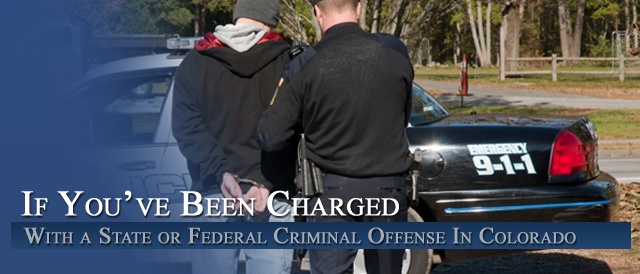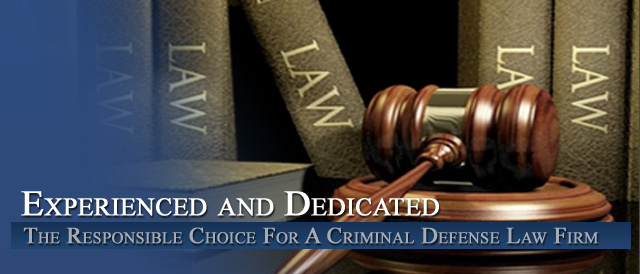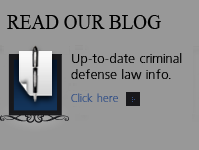




Colorado Criminal Traffic Law – DUI Training for Law Enforcement – Know the Enemy – DUI Police Training Materials – Police Witnesses
Introduction – Any good Colorado criminal defense lawyer will tell you that by studying the training materials available on the internet and elsewhere – used by law enforcement in their training classes – you can effectively cross examine them on their errors, inconsistencies and failures to follow protocol. What follows is an article on “being a witness” and rules that apply to witnesses written for DUI enforcement police. It is instructive at many levels.
Kinds of Witnesses
Generally speaking, only witnesses who have firsthand knowledge of the facts of a case are permitted to testify at trial. Their testimony is limited to their personal knowledge—what they heard or saw or personally know about the defendant or victim.
Thus, the citizen who witnesses a crash and the first law enforcement officers on the scene have personal knowledge of the events leading to the criminal case and will likely be called to testify about what they saw and heard. Other law enforcement officers may have additional contact with the defendant during or after his arrest. Each of these witnesses has direct knowledge of some fact important to the criminal case. The expert witness, on the other hand, is not required to have firsthand knowledge of the facts of the particular case, and in fact, often does not.
Why Expert Witnesses?
Rather, the expert witness testifies to the meaning of the facts (gives an opinion).
Arson Example, assume there is a fire that destroys a house. The prosecution is arguing that the fire was deliberately set and was not the result of an accident. Burn patterns resulting from arson typically vary from those caused by an accident. Laboratory testing of evidence gathered at the scene may reveal that an accelerant was used to help start and spread the fire. The average person would not have the experience, training, or knowledge to understand the significance of burn patterns or the meaning of laboratory results.
An arson expert would testify about these facts, and then state his or her opinion that the cause of the fire was “deliberate” and not accidental. The expert was not present when the fire started, yet his specialized training allows him to testify about the cause.
Who Is An expert?
Federal Rule of Evidence (FRE) 702 states: “If scientific, technical, or other specialized knowledge will assist the trier-of-fact to understand the evidence or to determine a fact in issue, a witness qualified as an expert by knowledge, skill, experience, training, or education, may testify thereto in the form of an opinion or otherwise.”
Even States that have not adopted the FRE have usually adopted, either by statute or case law, rules similar to the FRE governing the qualification of expert witnesses.
Before qualifying any witness as an expert, the proponent must establish that the evidence is beyond the knowledge of the average juror (or judge) and that expert testimony will assist the trier-of-fact in determining a fact at issue. Then, if the court agrees with the test as stated above, the proponent must establish that this witness has the requisite knowledge, skill, experience, training or education to offer an opinion on a fact of importance in this case.
It is possible for the court to agree that expert witness testimony would be helpful and therefore admissible, but then decide that the particular person a prosecutor or defense attorney has called as an expert witness is not, in fact, qualified as an expert. Perhaps the expert’s credentials were exaggerated (the masters degree and doctorate on his curriculum vitae were from a diploma mill and not an accredited university) or the expert claims such a broad range of quasi-expertise that he is in fact a “jack of all trades and master of none.”
What Follows Are Training Materials For The DUI Expert At Trial
Standardized Field Sobriety Test Officer As Experts
Standardized Field Sobriety Tests (SFSTs) as promulgated by the International Association of Chiefs of Police (IACP) and the National Highway Traffic Safety Administration (NHTSA) are not generally well known or understood by most jurors.
They are, however, routinely used by law enforcement officers in DUI Cases. The arresting officer must be fully prepared to testify in court.
Testimonial evidence in DUI cases is usually the only way to establish the fact that the accused was in fact the driver of the vehicle involved in the incident. The officer’s observations may be the only source for establishing that the accused was impaired.
Pre-trial Preparation
Preparation for testimony begins at the time of the incident and requires:
1. Recognizing significant evidence and documenting it in the field notes:
• Observations of or witnesses to vehicle operation
• Signs and symptoms of impairment
• Statements by the defendant
2. Compiling complete and accurate notes
3. Preparing a complete and accurate report –
Preparation for testimony continues prior to trial by:
1. Reviewing the case file
2. Discussing the case with other officers who witnessed the arrest or otherwise assisted in it
3. Mentally organizing the elements of the offense and the evidence that supports it
4. Mentally organizing the testimony to convey observations clearly and convincingly to the jury and judge
Once an officer receives a subpoena or other notification of a trial date, the officer should:
1. Obtain and review all records and reports
2. Revisit the scene if appropriate
3. Compare notes with assisting officers
4. Discuss the details of the case and testimony with the prosecutor assigned to the case
5. Make sure the prosecutor has been given copies of everything required by the law in your jurisdiction prior to trial (which may include handwritten notes, photographs, etc.)
Guidelines for Testimony – What You Say and How You Say It
During direct testimony, the officer’s responsibility is to present the facts of the case. Keep in mind—the officer saw and smelled it and the judge and jury did not.
The officer must paint a mental picture for the judge and jury. In order to do that, the officer should:
1. Testify to what he observed using language geared for the lay person – in other words, don’t use jargon, acronyms, or abbreviations;
2. Never guess at an answer – it’s okay to say, “I don’t know” if you don’t know; and
3. Provide specific descriptive details concerning exactly what the suspect did or was not able to do and explain what these actions mean.
An officer’s testimony should NOT include:
1. Testimony or evidence that has been excluded;
2. Exaggerated testimony; or
3. Testimony that can appear biased for or against the defendant.
Professional conduct during a trial is very important
Professional conduct during a trial is very important.
Jurors focus on an officer’s demeanor as well as the content of the testimony. Avoid becoming agitated or taking personal issue with defense tactics – just stick to the facts. Remember: the minute you lose your temper, you lose your audience.
Personal appearance also matters.
If you are a uniformed officer, wearing your uniform to court is usually preferable to street clothes. If in civilian clothes, wear dress pants and jacket— with tie, if male.
Answers to questions like these can aid you in DUI detection and in your testimony at trial.
Phase One:
What is the vehicle doing?
Do I have grounds to stop the vehicle?
How does the driver respond to my signal to stop?
How does the driver handle the vehicle during the stopping sequence?
Phase Two:
When I approach the vehicle, what do I see?
When I talk with the driver, what do I hear, see and smell?
How does the driver respond to my questions?
Should I instruct the driver to get out of the vehicle?
How does the driver get out of the vehicle?
When the driver walks toward the side of the road, what do I see?
Phase Three:
Should I administer field sobriety tests to the driver?
How does the driver perform those tests?
What exactly did the driver do wrong when performing each test?
What did he do right?
Do I have probable cause to arrest for DUI?
Should I administer a preliminary breath test?
What are the results of the preliminary breath test?
Law Enforcement Officer Responsibility
In each phase of detection, you must determine whether there is sufficient evidence to establish “reasonable suspicion” necessary to proceed to the next step in the detection process. It is always your duty to carry out whatever tasks are appropriate, to make sure that all relevant evidence of DUI is brought to light.
The most successful DUI detectors are those officers who:
-know what to look and listen for;
-have the skills to ask the right kinds of questions;
-choose and use the right kinds of tests;
-fully document all verbal, visual, and sensory observations; and,
-are motivated to apply their knowledge and skill whenever they contact someone who may be under the influence.
These officers are likely to make more arrests and help secure convictions.
Note-Taking Responsibility
A basic skill needed for DUI enforcement is the ability to graphically describe your observations. Just as detection is the process of collecting evidence, description largely is the process of conveying evidence. Your challenge is to communicate evidence to people who weren’t there to see, hear, and smell the evidence themselves. Your tools are the words that make up your written report and verbal testimony. You must communicate with the supervisor, the prosecutor, the judge, the jury, and even with the defense attorney. You are trying to “paint a word picture” for these people, to develop a sharp mental image that allows them to “see” what you saw; “hear” what you heard, and “smell” what you smelled.
Officers with the knowledge, skills, and motivation to select the most appropriate words for both written reports and courtroom testimony will communicate clearly and convincingly, making them more successful in DUI prosecution.
Field notes are only as good as the information they contain. Reports must be clearly written and events accurately described if the reports are to have evidentiary value. One persistent problem with DUI incident reports is the use of vague language to describe conditions, events and statements.
When vague language is used, reports provide confused picture of what happened. Clear and convincing field reports provide strong evidence in court.
One of the most critical tasks in the DUI enforcement process is the recognition and retention of facts and clues that establish reasonable suspicion to stop, investigate, and subsequently arrest persons suspected of driving or operating a vehicle while impaired. The evidence gathered during the detection process must establish the elements of the violation and must be documented to support successful prosecution of the violator. This evidence is largely sensory (sight, smell, hearing) in nature, and therefore is extremely short-lived.
You must be able to recognize and act on the facts and circumstances with which you are confronted. But you also must be able to recall those observations and describe them clearly and convincingly to secure a conviction. You may be inundated with evidence of DUI (i.e., sights, sounds, smells). You recognize this evidence, sometimes subconsciously, and on this evidence base your decisions to stop, investigate, and ultimately arrest.
Field notes are only as good as the information they contain. Reports must be clearly writtenand events accurately described if the reports are to have evidentiary value.
One persistent problem with DUI incident reports is the use of vague language to describe conditions, events, and statements. When vague language is used, reports provide a murky picture of what happened. Clear and convincing field reports provide strong evidence in court.
Vague language – Clear language
Made an illegal left turn on Jefferson From Main, turned left (northbound) onto Jefferson, which is one way southbound.
Drove erratically Was weaving from side to side in his lane, and then he crossed center line twice and drove on right shoulder three times. All within two blocks.
Driver appeared drunk Driver’s eyes bloodshot; watery; gaze fixed; hands shaking. Strong odor of alcoholic beverage on driver’s breath.
Vehicle stopped in unusual fashion Vehicle struck, climbed curb; stopped on sidewalk.
Vehicle crossed the center line Vehicle drifted completely into the opposing traffic lane.
The field notes provide the information necessary to complete required DUI report forms and assist you in preparing a written account of the incident. The field notes can also be used to refresh your memory if you are required to provide oral testimony. One way to improve the effectiveness of your handwritten field notes is to use a structured note-taking guide. The guide makes it easy to record brief notes on each step of the detection process and ensures that vital evidence is documented.
Note-taking Guide
Remember that you must document those actions which gave you reasonable suspicion or probable cause to justify further investigation of a suspected DUI incident.
When creating a form to accomplish this you may wish to consider the following format:
Section I provides space to record basic information describing the suspect, the vehicle, the location, and the date and time the incident occurred.
Section II provides space to record brief descriptions of the vehicle in motion (Detection Phase One), including initial observation of the vehicle in operation, and observation of the stopping sequence.
Section III provides space to record brief descriptions of the personal contact with the suspect (Detection Phase Two), including observation of the driver. General observations provide space to record the suspect’s manner of speech, attitude, clothing, etc. Any physical evidence collected should also be noted in this section. It is also important to record all statements made by the defendant that relate to operation and intoxication (e.g., “I only had two beers” or “I was driving this car for the first time”).
Section IV provides space to record the results of all field sobriety tests that were administered, and the results of the preliminary breath
Other Articles of Interest:
- Colorado Teen Driving Laws
- Challenging Police Lineups
- When Experts Testify
- Unfair Tactics
- Ex-Arapahoe Douglas County Prosecutor H. Michael Steinberg Reveals Some Things Your Prosecutor Doesn’t Want You To Know About Your Colorado DUI












